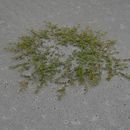en
names in breadcrumbs


Polygonum fowleri, commonly called Fowler's knotweed or Hudsonian knotweed, is a plant species native to the seashores of the northern part of North America. It has been reported from every Canadian province and territory except Alberta and Saskatchewan, as well as from Maine, Alaska, Washington, Oregon, California, and St. Pierre & Miquelon. It is usually found in gravelly locations along the seacoast.[2][3]
Polygonum fowleri is a prostrate to ascending herb, often with zigzagged stems. Inflorescences are in the axils of the leaves, each with up to 10 white or pink flowers.[2][4]
Two subspecies are recognized, treated by some botanists as distinct species:[2]
Polygonum fowleri, commonly called Fowler's knotweed or Hudsonian knotweed, is a plant species native to the seashores of the northern part of North America. It has been reported from every Canadian province and territory except Alberta and Saskatchewan, as well as from Maine, Alaska, Washington, Oregon, California, and St. Pierre & Miquelon. It is usually found in gravelly locations along the seacoast.
Polygonum fowleri is a prostrate to ascending herb, often with zigzagged stems. Inflorescences are in the axils of the leaves, each with up to 10 white or pink flowers.
SubspeciesTwo subspecies are recognized, treated by some botanists as distinct species:
Polygonum fowleri subsp. fowleri – shores of Atlantic, Pacific, and Arctic Oceans Polygonum fowleri subsp. hudsonianum (S. J. Wolf & McNeill) Costea & Tardif (= P. hudsonianum (S. J. Wolf & McNeill) H. R. Hinds) – shores of Hudson Bay, the Canadian Arctic Islands, and the Atlantic coast of Labrador, Newfoundland, and Nova Scotia